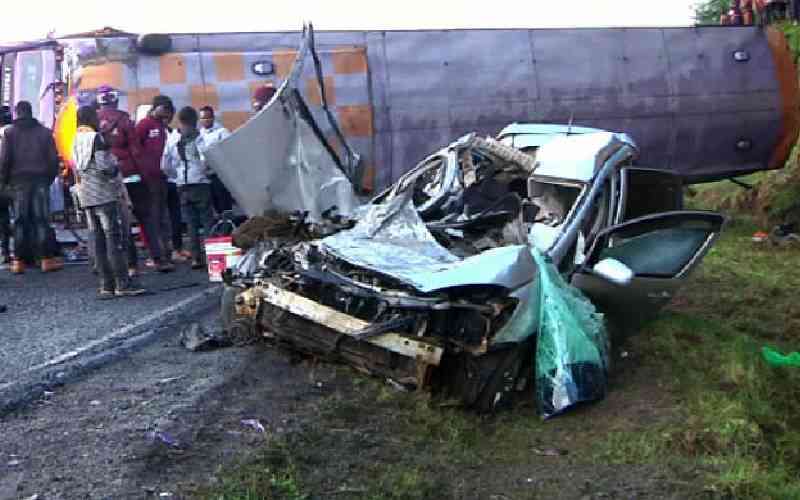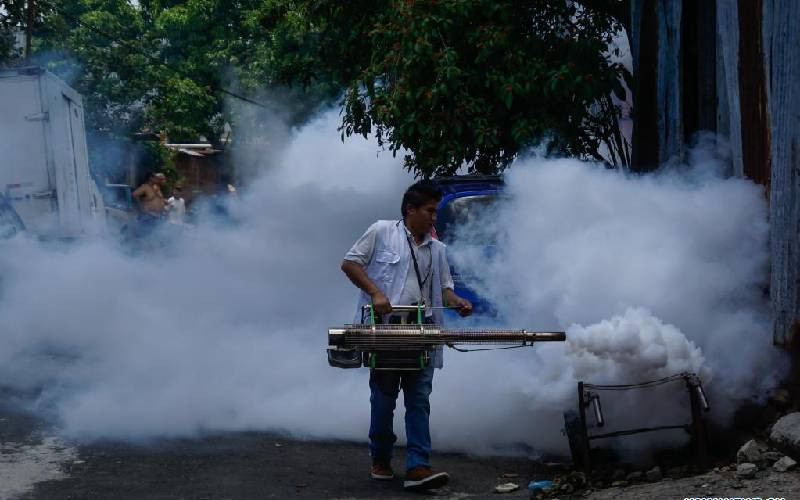
Two peculiar things concerning road safety happened in Nairobi in the past two weeks and all were immediately forgotten.
City dwellers, and mainly road users—pedestrians, motorists, and all types of cyclists—probably did not see them as peculiar, and that is why they forgot about them so fast.
On the flip side, another reason why these things were forgotten immediately is because they are to do with road safety, a concept that is foreign and a subject that should only be discussed by idlers. Or people with nowhere to go to. In a hurry.
One of the peculiar incidents was reported by our writer on Friday last week, but had been happening for almost two weeks before it was figured it was a story worth publishing in a national newspaper.
“Two weeks ago,” our reporter wrote, “many were awed after spotting cows crossing a footbridge on the busy Outer Ring Road in Nairobi’s Eastlands. The animals were photographed at the Stage Mpya footbridge within Fedha in Embakasi.”
Just to jog your memory, the reporter said that the animals—sheep, cows and goats—“have slowly been adapting to the changing design of the road that passes through the estate.”
While animals had embraced road safety in order to get to the other side alive, Kenyans were still flirting with death by darting across the highway.
In other countries, what was being witnessed at Stage Mpya would be a tourist attraction, and the main attraction would not be the animals.
Tourists would be flocking there to marvel at this high level of carelessness, and I fear to say, stupidity being exhibited by Kenyan men, women and children.
This is because in other countries, footbridges and such are part of the road design, and not an afterthought when road users have complained.
Also, road users know that all these contraptions are installed for their own safety, and cannot dart across the highway, right under the safety net put in place so they can cross leisurely and safely.
Just about the same time when livestock were making good use of the footbridge, the authorities were busy arresting those who walked under it.
It is not clear what they were to be charged with if ever taken to court, and even if released without getting arraigned, what traffic offence would they be told they had violated?
Whatever the case, isn’t it odd that Kenyans have to be arrested as a way of forcing them to observe safety rules put in place to protect them and save them from harm?
Stay informed. Subscribe to our newsletter
It is easy to blame the authorities for high-handedness, and rightfully so, because they never pass the safety message in a polite manner, and are out to use brute force almost all the time.
But at the same time, the road users who avoid the footbridges can only be called selfish, for, it does not occur to them that their unwarranted darting across the highway is an inconvenience to motorists, and should, God forbid, there be an accident, many other commuters on other roads will be affected because of gridlock.
At times, it seems Kenyans just do not want to follow laid down rules but do not have any valid reason why. When it comes to transport, or the roads, both motorists and pedestrians are equally at fault.
Amongst themselves, motorists are not cordial or courteous to each other. They cause most of the problems on the roads that they complain about.
Everyone is always in a rush and no one wants to give way. When there are pedestrians in the mix, the confusion goes a notch higher, for the latter too believe that the roads are meant for them alone, and motorists are just encroaching, cramping their space, even in areas where there are footbridges for their own safety.
Ideally, road safety is never in the minds of Kenyan road users, and the reason why this is so, can be traced back to our institutions and poor governance.
Kenyan driving schools are run by money-minded individuals who promise a 100 per cent pass rate because they grease the palms of government officials who conduct the tests.
The authorities care less about safety, for, if they did, then they would ensure driving school students understand the road signs and traffic rules, thus, they would not be open to their palms being greased by entrepreneurs so all students can pass.
Then there is the education system. Despite the fact that there are new furniture, such as footbridges, on the highways, it is still stuck at the curriculum of look left, look right and look left again, then cross.
Thus, those who risk their lives running across the highway feel contented that they observed the rules as they were taught, and never ever think of using the footbridge which they see as an inconvenience.
This last point begs the question, how did cows, goats and sheep learn that footbridges are safer?
They used common sense. That is what road users in Nairobi, and other Kenyan towns, lack.
 The Standard Group Plc is a
multi-media organization with investments in media platforms spanning newspaper
print operations, television, radio broadcasting, digital and online services. The
Standard Group is recognized as a leading multi-media house in Kenya with a key
influence in matters of national and international interest.
The Standard Group Plc is a
multi-media organization with investments in media platforms spanning newspaper
print operations, television, radio broadcasting, digital and online services. The
Standard Group is recognized as a leading multi-media house in Kenya with a key
influence in matters of national and international interest.
 The Standard Group Plc is a
multi-media organization with investments in media platforms spanning newspaper
print operations, television, radio broadcasting, digital and online services. The
Standard Group is recognized as a leading multi-media house in Kenya with a key
influence in matters of national and international interest.
The Standard Group Plc is a
multi-media organization with investments in media platforms spanning newspaper
print operations, television, radio broadcasting, digital and online services. The
Standard Group is recognized as a leading multi-media house in Kenya with a key
influence in matters of national and international interest.









